
Willa Sibert Cather was an American writer known for her novels of life on the Great Plains, including O Pioneers!, The Song of the Lark, and My Ántonia. In 1923, she was awarded the Pulitzer Prize for One of Ours, a novel set during World War I. In 2023, a statue of Willa Cather was placed in Statuary Hall in the US Capitol, one of the statues from the State of Nebraska.

Dr. Artemis Fowl II is the eponymous character of the Artemis Fowl series by Eoin Colfer. Colfer has said that he based Artemis on his younger brother Donal, who as a child was "a mischievous mastermind who could get out of any trouble he got into." A childhood picture of his brother in his first communion suit caused Colfer to think of how much Colfer's brother resembled "a little James Bond villain" and "how funny...a twelve-year-old James Bond villain" would be, inspiring Colfer's creation of Artemis.
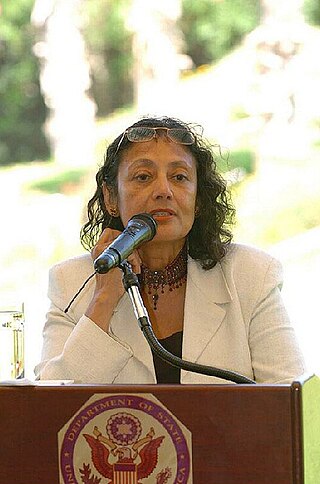
Bharati Mukherjee was an Indian American-Canadian writer and professor emerita in the department of English at the University of California, Berkeley. She was the author of a number of novels and short story collections, as well as works of nonfiction.

Jasmine is a novel by Bharati Mukherjee set in the 1980s about a young Indian woman in the United States who, trying to adapt to the American way of life in order to be able to survive, changes identities several times. Mukherjee's own experiences of dislocation and displacement in her life helps her in recording the immigrant experience of the protagonist in this novel.
Svayamvara is a type of marriage mentioned in Hindu history where a woman chose a man as her husband from a group of suitors. Svayaṁ in Sanskrit means 'self' and vara means 'groom'. The bride wishing to marry would select an auspicious time and venue and then broadcast her intentions. Kings typically sent messengers to outside lands, while commoners simply spread the news within the local community. On the appointed day, suitors would gather at the venue and declare their qualifications. The bride would place a garland on the man of her choice and a marriage ceremony was held immediately. However, this type of marriage is not attested in any Dharmaśāstra.

Chitra Banerjee Divakaruni is an Indian-born American author, poet, and the Betty and Gene McDavid Professor of Writing at the University of Houston Creative Writing Program. Her short story collection, Arranged Marriage, won an American Book Award in 1996. Two of her novels, as well as a short story were adapted into films.

The Tree Bride, (2004) is a historical novel by Bharati Mukherjee. It is the sequel to Desirable Daughters.

Leave It to Me is a 1997 novel by Bharati Mukherjee. The story utilizes the myth of the Hindu Goddess, Durga, who is associated with protection, strength, motherhood, destruction, creation, and wars.

The Holder of the World, (1993) is a novel by Bharati Mukherjee. It is a retelling of Nathaniel Hawthorne's 1850 novel The Scarlet Letter, placing the story in two centuries. The novel involves time travel via virtual reality, locating itself in 20th century Boston, 17th century Colonial America, and 17th century India during the spread of the British East India Company. It also references Thomas Pynchon's novel, V.. The Holder of the World was among the contenders in a 2014 list by The Telegraph of the 10 all-time greatest Asian novels

The Middleman and Other Stories (1988) is a collection of short stories written by Bharati Mukherjee. This book won the 1988 National Book Critics Circle Award.
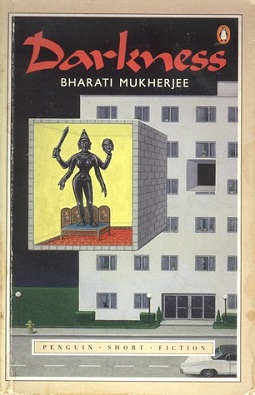
Darkness (1985) is a collection of short stories by Bharati Mukherjee.
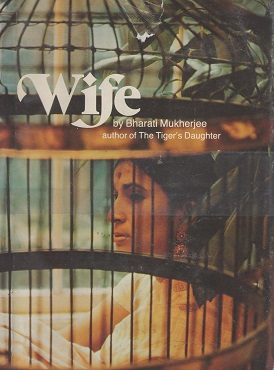
Wife (1975) is a novel by Bharati Mukherjee.The book was originally published by Houghton Mifflin.
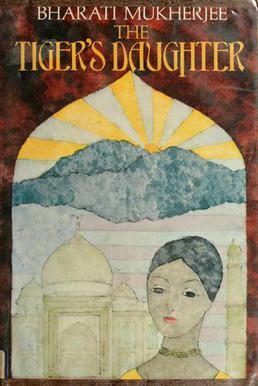
The Tiger's Daughter (1971) is the first novel by Indian American author Bharati Mukherjee.

Tara Alisha Berry is an Indian actress, known for her works in Hindi, Tamil and Telugu films. She started out with a music video with Shaan, called Khudgarzi, produced by Eros in 2011. Her debut Hindi film was Mastram.

Grahasti also called Grihasti, is a 1963 Indian Hindi-language drama film, directed by Kishore Sahu. Produced by S. S. Vasan for Gemini Studios, its music director was Ravi and the lyrics were written by Shakeel Badayuni. Pandit Mukhram Sharma wrote the dialogues with cinematography by P. Ellappa. The film starred Ashok Kumar, Manoj Kumar, Rajshree, Nirupa Roy, Indrani Mukherjee, Bipin Gupta, Lalita Pawar and Gajanan Jagirdar.

Mridula Mukherjee is an Indian historian known for her work on the role of peasants in the Indian independence movement. She is an ex-chairperson of the Centre for Historical Studies at the Jawaharlal Nehru University, Delhi, and former director of the Nehru Memorial Museum and Library.

Shareefa Hamid Ali, also known as Begum Hamid Ali, was an Indian feminist, nationalist, advocate, and political figure. She was the President of the All India Women's Conference in 1935, and one of the founding members of the United Nations Commission on the Status of Women in 1947.
Aparna Basu was an Indian historian, author, social worker and advocate for women’s rights. She was a professor of Modern Indian history and head of the History department at Delhi University. In her later career, she served as President of the All India Women's Conference (AIWC) and chairperson of the National Gandhi Museum in New Delhi.

Swarnakumari Devi, also known as Swarnakumari Tagore, Swarnakumari Ghosal, Svarṇakumārī Debī and Srimati Svarna Kumari Devi, was an Indian Bengali writer, editor, essayist, poet, novelist, playwright, composer, and social worker.
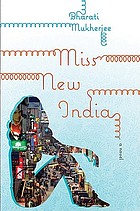
Miss New India is Bharati Mukherjee's eighth novel. It was published in 2011 by Houghton Mifflin Harcourt. Miss New India is "the third part of a trilogy that began with Desirable Daughters (2002) and The Tree Bride (2004)."


















